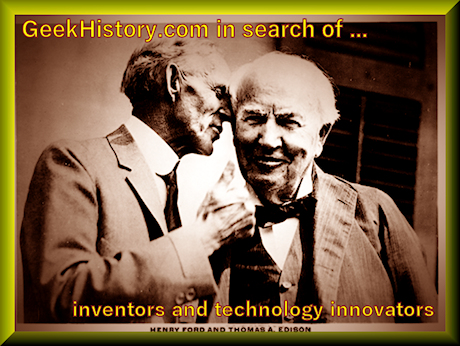 In this section of GeekHistory we put some of the buzzwords into perspective to help you understand and appreciate great inventors and technology innovators.
In this section of GeekHistory we put some of the buzzwords into perspective to help you understand and appreciate great inventors and technology innovators.
In the previous article we took a look at a true visionary Jules Verne. Visionaries see what is possible, often before the technology exists to make it real.
The inventors often take visions of others and made them real by proving the concepts in laboratory or by creating the prototype. There are innovators who take a good invention and make it great, transforming the inventions into commercial products
What is the difference between innovation and invention?
There are people like Henry Ford, who spanned multiple categories, who take an invention and develop it into an industry. Let's use Ford as an example to look at the buzzwords.
Henry Ford didn't invent the automobile. German engine designer Karl Friedrich Benz is recognized for the invention of the first automobile. He Benz received a patent for the Benz Patent Motorcar in 1886. His Benz Patent Motorcar powered by an internal combustion engine.
But Benz invented the automobile using the internal combustion engine, which was developed by German engineer Nikolaus August Otto in the 1860s.
Henry Ford didn't invent the assembly line, nor did he invent the concept of an automotive assembly line. Ransom Eli Olds, for whom both the Oldsmobile and REO brands were named, is credited with designing the basic concept of the assembly line. At the Old Motor Works in Detroit he mass produced the Curved Dash Oldsmobile becoming the leading American auto producer from 1901 through 1904. By 1901 Olds had built 11 prototype vehicles, including at least one of each power mode: steam, electricity and gasoline.
No, Henry Ford did not invent "the automobile," but Henry Ford was an inventor of automobiles. Henry Ford designed his first car, the Quadricycle, while he was employed by Thomas Edison.
No, Henry Ford did not invent "the assembly line," but Henry Ford was the first to use a moving assembly line to manufacture cars. Henry Ford perfected the assembly line producing a entire Model T Ford in 93 minutes. Henry Ford created lower cost automobiles, and created an industry.